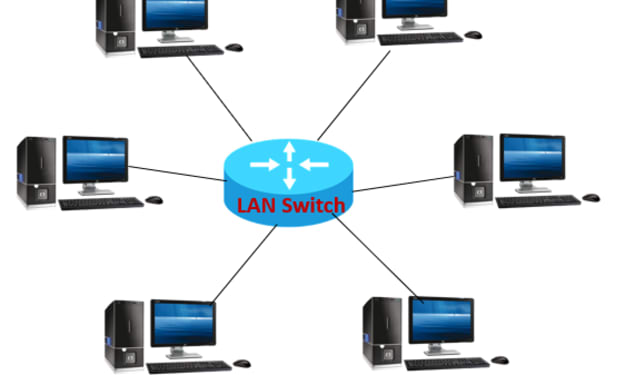
Battery Overview
A battery is an electrochemical device that stores and releases electrical energy by converting chemical energy into electrical energy. It is a portable power source that can be used to power a wide range of electronic devices, from small handheld gadgets like smartphones and digital cameras to large vehicles and industrial machinery.
Batteries consist of one or more electrochemical cells, which are composed of two electrodes - an anode and a cathode - separated by an electrolyte. When a battery is connected to a device, a chemical reaction occurs in the cell that produces electrons, which flow from the anode to the cathode through an external circuit, providing electrical energy to the device.
There are many different types of batteries, including alkaline, lead-acid, lithium-ion, nickel-cadmium, and nickel-metal hydride batteries, among others. Each type has its own characteristics in terms of voltage, capacity, energy density, and other factors, which make them more suitable for different types of applications.
Battery types.
There are several types of batteries, including:
Alkaline Batteries: These are the most common type of battery and are widely used in electronic devices such as toys, remote controls, and flashlights.
Lithium-ion Batteries: These are rechargeable batteries that are commonly used in portable electronic devices such as laptops, smartphones, and cameras.
Lead-Acid Batteries: These are commonly used in vehicles, uninterruptible power supplies, and backup power systems.
Nickel-Cadmium Batteries: These are rechargeable batteries that were once popular for use in portable electronic devices, but have been largely replaced by lithium-ion batteries.
Nickel-Metal Hydride Batteries: These are also rechargeable batteries that are commonly used in cordless power tools, medical equipment, and hybrid vehicles.
Zinc-Carbon Batteries: These are a type of disposable battery that is commonly used in low-power devices such as clocks, remote controls, and flashlights.
Silver-Oxide Batteries: These are also a type of disposable battery that is commonly used in watches, calculators, and other small electronic devices.
Lithium-Polymer Batteries: These are a type of rechargeable battery that is commonly used in drones, electric vehicles, and portable electronic devices.
Advantages of Battery
There are several advantages of using batteries, including:
Portability: Batteries are portable and can be easily carried around, making them a convenient source of power for a wide range of devices.
Reliability: Batteries are highly reliable and can provide a consistent and stable source of power, making them ideal for critical applications where power interruptions can be costly or even dangerous.
Low Maintenance: Batteries require very little maintenance and can operate for long periods of time without any attention.
Environmentally Friendly: Many batteries can be recycled, making them an environmentally friendly source of power.
Cost-effective: While the initial cost of batteries can be high, they can often be more cost-effective in the long run, as they do not require expensive installation or ongoing maintenance.
Versatile: Batteries can be used for a wide range of applications, from powering small devices like cell phones and laptops to larger systems like electric vehicles and backup power systems.
Battery Disadvantages.
Batteries, despite their many advantages, do have some disadvantages, including:
Limited lifespan: Batteries have a limited lifespan and will eventually need to be replaced or recharged. The lifespan of a battery depends on many factors, including usage, storage conditions, and the type of battery.
Environmental impact: Batteries can have a negative impact on the environment if not disposed of properly. Many batteries contain toxic chemicals, such as lead and mercury, which can harm the environment and human health if not handled correctly.
Weight and size: Batteries can be heavy and bulky, which can be a disadvantage for portable devices or applications where space is limited.
Cost: Some types of batteries can be expensive, especially if they are designed for high-performance applications.
Charging time: Depending on the type of battery and the charging method used, batteries can take a long time to charge, which can be a disadvantage in situations where quick charging is needed.
Battery Manufacturers
I'm not sure exactly what you're asking, but if you're looking for information on companies that manufacture batteries, there are several well-known companies in the industry. Here are a few examples:
Panasonic: A Japanese multinational corporation that produces a wide range of electronic devices and components, including batteries.
LG Chem: A South Korean chemical company that specializes in the development and production of advanced batteries for use in electric vehicles, smartphones, and other devices.
Tesla: An American electric vehicle and clean energy company that produces batteries for its own vehicles as well as for use in stationary energy storage systems.
Duracell: An American brand that is best known for producing alkaline batteries for consumer use, such as in toys, flashlights, and other devices.
Eneloop: A brand of rechargeable batteries produced by Panasonic, known for their long life and ability to hold a charge even when not in use.
These are just a few examples, as there are many other companies involved in the battery manufacturing industry.
Battery Safety Tips.
Here are some tips for safe use of batteries:
Use the Right Charger: Always use the charger that came with your battery or a compatible one recommended by the manufacturer. Don't use a cheap or counterfeit charger as it can damage your battery.
Avoid Extreme Temperatures: Batteries work best in a temperature range of 15-25°C (59-77°F). Avoid exposing your battery to high temperatures or leaving it in direct sunlight, as it can cause the battery to degrade quickly.
Don't Overcharge: Overcharging a battery can damage it, reduce its lifespan, and even cause it to overheat and catch fire. Always unplug the charger once the battery is fully charged.
Don't Drain Completely: Avoid letting your battery drain completely before recharging it. A battery that is constantly drained to 0% can cause irreversible damage to the battery's capacity.
Store Safely: If you're not using your battery for an extended period, store it in a cool, dry place away from direct sunlight. A discharged battery should be charged to about 50% before storage.
Replace Damaged Batteries: If you notice any physical damage to your battery, such as swelling or leaks, replace it immediately.
By following these simple tips, you can ensure the safe and long-lasting use of your battery.
Assembling a battery.
The process of assembling a battery will depend on the type of battery you are dealing with. However, in general, the steps involved in assembling a battery are:
Gather all the necessary components: This may include the battery cells, connectors, wires, a battery holder or casing, and any other necessary components.
Prepare the battery cells: Depending on the type of battery you are assembling, you may need to prepare the battery cells. For example, if you are assembling a lithium-ion battery, you may need to solder tabs onto the battery cells.
Connect the battery cells: Once the battery cells are prepared, connect them together in the desired configuration using the connectors and wires.
Install the battery: Once the cells are connected, place them into the battery holder or casing, making sure to secure them in place.
Connect the battery to the device: Finally, connect the battery to the device you wish to power, making sure to follow the manufacturer's instructions and any safety precautions.
Note: Assembling a battery can be dangerous if proper safety precautions are not taken. It is important to wear appropriate personal protective equipment, work in a well-ventilated area, and follow all safety guidelines and procedures. If you are unsure about how to assemble a battery, seek the advice of a professional.





Comments
There are no comments for this story
Be the first to respond and start the conversation.